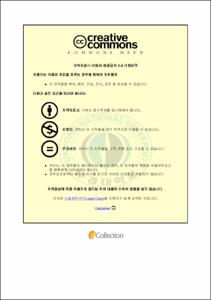Artificial Intelligence Based Dual Response Approach for Robust Parameter Design
- Abstract
- The concept of dual response approach based on response surface methodology has widely been investigated and adopted for robust designs’ purpose. Separately estimating mean and variability responses, a dual response approach may take advan¬tage of optimization modeling for finding optimum settings of input factors. One of the most typical robust design models is formulated to minimize variability while keeping the process mean at the desired target. Depending on the nature of applications, however, various versions of optimization modeling have been suggested in the literature since trade-off decisions between mean and variability responses need to be made to accomplish the goal of robust design. These studies propose some alternatives to dual response approach. First, an artificial neural network has been applied to model relationships between responses and input factors. Training, validating, and testing a neural network with empirical process data, an artificial data based on the neural network may be generated and used to estimate response functions without performing real experimentations. Second, a hybrid neural network - genetic algorithms has been proposed for the purpose of parameter design. Third, proposed is a robust design scheme for enhanced process capability by applying a dual response approach. A drug formulation example from pharmaceutical industry has been studied to demonstrate the procedures and applicability of the proposed approach.
- Issued Date
- 2014
- Awarded Date
- 2014. 8
- Type
- Dissertation
- Publisher
- 부경대학교
- Affiliation
- 대학원
- Department
- 대학원 시스템경영공학과
- Advisor
- 김영진
- Table Of Contents
- Chapter 1 Introduction .……………………………………………….. 1
1.1 Background ………………………………………………….……… 1
1.2 Problem Statement …………………………….……………………. 4
1.3 Research Contributions ……………………………………………... 5
1.4 Dissertation Outline ….……………………………………………... 6
Chapter 2 Related Concepts ……………………………………….….. 8
2.1 Dual Response Approach ………………………………………….. 12
2.2 Artificial Intelligence ……………………………………………… 14
2.3 Process Capability …………………………………………………. 28
2.4 Data Set ……………………………………………………………. 30
Chapter 3 Robust Parameter Design based on Back Propagation Neural Network ...……………………………………………………..……… 33
3.1 BPNN based Procedure ..……………………….…….…………. 35
3.2 Illustrative Example …………………………………………….. 38
3.3 Discussion ……………………………………….…………….... 56
Chapter 4 Combining Neural Network and Genetic Algorithms … 59
4.1 Hybrid BPNN-GA Procedure .………….………………….……. 61
4.2 Illustrative Example ……………………………………………... 64
4.3 Discussion ……………………………………………………….. 78
Chapter 5 Design Optimization for Capability Enhancement ……. 80
5.1 Robust Design as a Bi-Objective Optimization Model ………..... 83
5.2 Proposed Optimization Metrics ………………………………… 85
5.3 An Example and Discussion .………………………………….... 90
Chapter 6 Conclusion and Further Research ……………………..... 93
6.1 Conclusion ……………………………………………….………. 93
6.2 Further Research ….……................................................................ 94
References …………………………………………………………….. 96
Appendices ………………………………………………………….... 103
Abstract ….…………………………………………………………… 109
Korean Abstract ……………………………………………………… 111
Acknowledgement……………………………………………………. 113
- Degree
- Doctor
- Files in This Item:
-
-
Download
 Artificial Intelligence Based Dual Response Approach for Robust Parameter Design.pdf
기타 데이터 / 3.35 MB / Adobe PDF
Artificial Intelligence Based Dual Response Approach for Robust Parameter Design.pdf
기타 데이터 / 3.35 MB / Adobe PDF
-
Items in Repository are protected by copyright, with all rights reserved, unless otherwise indicated.